Last Updated on April 4, 2024
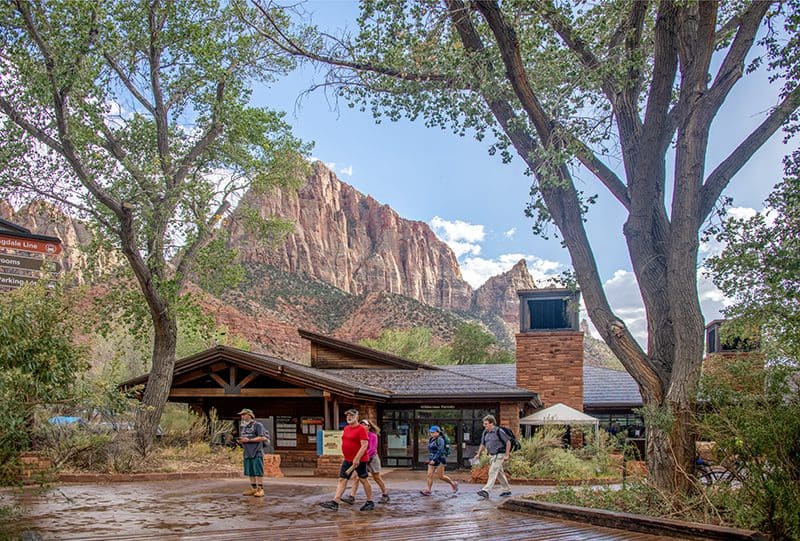
By Jim Ferri
Many travelers all over the world consider the U.S. National Parks the crown jewels of America.
There are 63 National Parks spread all over the country, although there is not one in every state. California is the leader with 9 National Parks, with Alaska not far behind with 8.
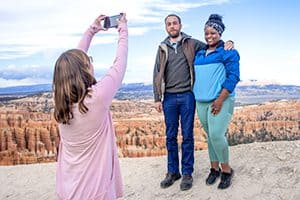
But many travelers find Utah, with only 5 National Parks to be the most phenomenal.
The reason? Although Utah is only half the size of California and one-seventh that of Alaska, the Utah Big 5 – also known as the “Mighty 5” – are near one another in the state’s southern half. That proximity makes them not only relatively easy to visit if you’re in Salt Lake City or Las Vegas, but they’re also a great road trip.
I made a road trip to the Utah Big 5 recently, and found these these National Parks to be an exceptional experience.
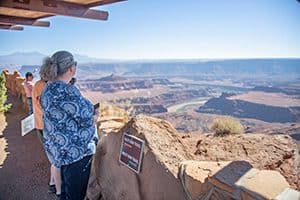
The park closest to Salt Lake City is Arches National Park, about four hours south of the Utah capital. From Arches, the other National Parks lie almost in a straight line down to Zion National Park. It’s near the Arizona-Nevada border in the southwest corner of the state.
Conversely, you can easily do this trip in reverse, starting with Zion, the southernmost of Utah’s Big 5, and only a 2½-hour drive from Las Vegas. Either way, you choose to go, you’ll drive through some beautiful countryside along the way.
Note: Many different passes and discounts are also available to U.S. National Parks and other Federal Recreational Lands. Some are free. See America the Beautiful for information.
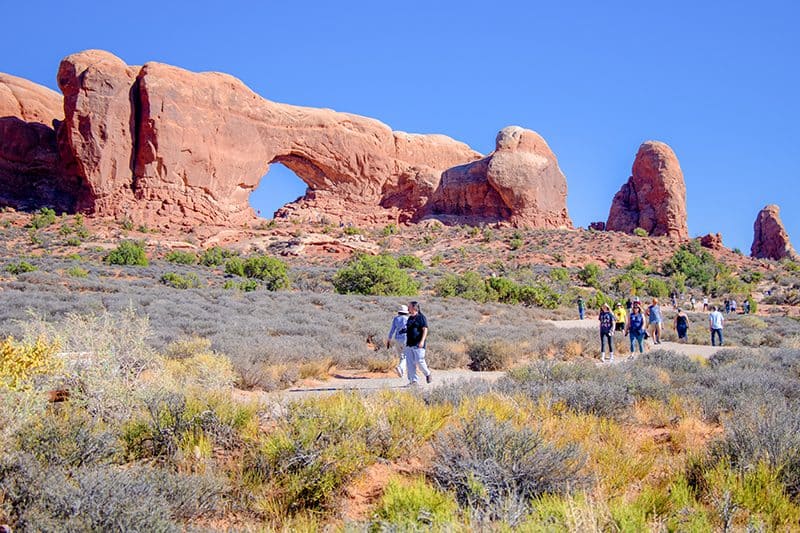
Arches National Park
The rock layers in Arches National Park reveal millions of years of geological events. They go back to when the Park was a dry seabed 65 million years ago. In more “recent” times, only 10,000 years ago, prehistoric Indians occupied the region.
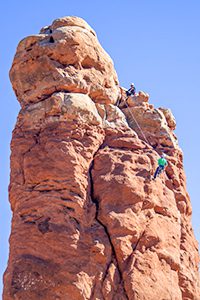
Today, about 1.5 million travelers visit the area every year. They come to photograph, camp, rappel, bike ride, hike, and enjoy whitewater rafting, horseback riding, and more. In addition, it’s an excellent destination for families.
Like other parks in Utah’s Big 5, Arches is also a kaleidoscope of colors and textures. It’s also home to the most natural sandstone arches on earth. 2,000 of them are shaped by rain and wind over thousands of years.
In addition to its arches, the 73,000-acre park is a red-rock wonderland filled with pinnacles, rock fins, and hoodoos, the latter tall rock spires sculpted by centuries of erosion.
Not surprisingly, Arches is Nirvana for photographers. Beneath a beautiful blue sky, you’re surrounded by an incredible red, purple, orange, and brown landscape. It’s stunning at sunrise and, especially, at sunset. And its desert climate makes it enjoyable and beautiful to visit in any season.
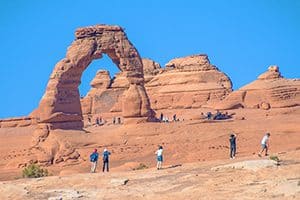
You can tour the park by car, viewing some of the park’s giant arches on one of the many scenic driving routes.
Of its thousands of arches, there are two, Delicate Arch and Double O Arch, that are exceptionally popular with visitors.
Delicate Arch is the largest free-standing arch in the park and one of the most notable geologic features in the world. The most popular with visitors, you can see it from the road and parking lot. You can get a closer view on a 3-mile roundtrip hike on a gentile uphill trail, doable for most visitors.
Arches
Arches National Park, just outside Moab, in southeastern Utah, is about a 4-hour drive from Salt Lake City, an 8½ hour drive from Las Vegas. It’s also very popular with travelers, and the park can get crowded at Easter, Memorial Day, and Labor Day.
– Fees: Private Vehicle – $35 / Motorcycle – $25 / bicyclists, hikers, and pedestrians – $15
– Opening days and hours are convoluted; see opening dates and hours.
– https://www.nps.gov/arch/index.htm
– Tel: (435) 719-2299
Note: From April 1 to October 31, visitors must have a timed entry ticket to enter the park ($2).
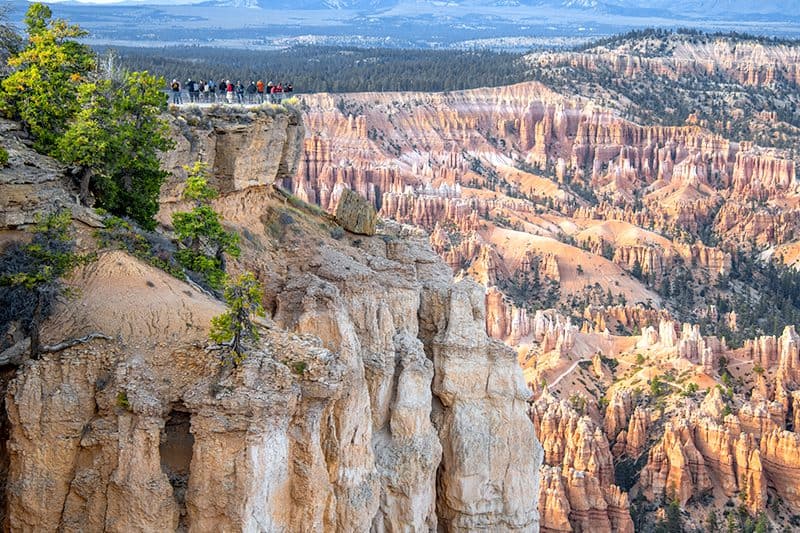
Bryce Canyon National Park
Surprisingly, Bryce Canyon is not an actual canyon, since it was not created by the erosion of flowing water. Instead, it was formed by the freezing and thawing of water and erosion from rainfall.
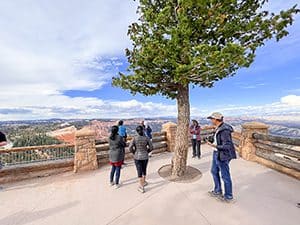
Still, there’s no denying Mother Nature did a fantastic job in this Utah Big 5 National Park. Bryce is a spectacular wonderland of red rocks and multi-hued spires. Its rock formations are stunning, especially for someone who’s never seen Hoodoos.
Rock pillars, Hoodoos are also the park’s most unique feature. They range in height from 5–100+ feet, with more in Bryce Canyon than anywhere else. It also has horseshoe-shaped amphitheaters on its eastern edge.
In addition, Bryce is an alpine and vertical forest of 2,000+ feet with three climatic zones. As such, you’re often surrounded by vistas of dark green fir trees and red and orange rock walls. For many people, it’s their favorite National Park in the southwest USA.
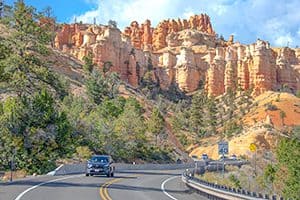
In Bryce, you can hire local guides for hiking or horseback riding. Many hikers hike the Navajo Loop Trail, which winds through hoodoos and slot canyons.
Camping is also very popular in Bryce. Stay overnight and you’ll have no trouble seeing Sunset Point and Sunrise Point, two famous places that, not surprisingly, draw crowds at sunset and sunrise.
Bryce is also an International Dark Sky Park with excellent stargazing since there is little light pollution. This Utah Big 5 park has been called the “last great sanctuary of natural darkness.” If you want to see the Milky Way as never before, this is the place to go.
You can view a lot of Bryce on a scenic drive on an 18-mile stretch of Highway 63, which starts at the visitor center.
Bryce Canyon
Bryce is a 4-hour drive from both Salt Lake City or Las Vegas. As are some other National Parks, it’s also open year-round, with cross-country skiing and winter hiking in the colder months.
– Fees: Private Vehicle – $35 / Motorcycle – $30 / bicyclists, hikers, and pedestrians – $20
– https://www.nps.gov/brca/index.htm
– Tel: (435) 834-5322
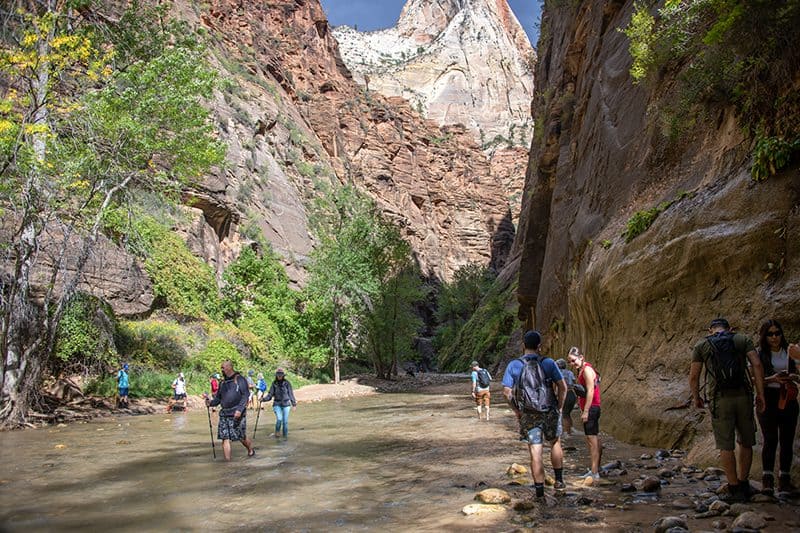
Zion National Park
Of all the Utah Big 5, Zion is, undeniably, the most popular. It offers hiking, camping, backpacking, climbing, and more, making it a popular summer vacation spot for families and adventurers.
The oldest of Utah’s National Parks, it’s a landscape of towering rock formations, soaring cliffs, and sandstone canyons. Among other things, it will dazzle you with its 1,000-foot red and pink cliffs.
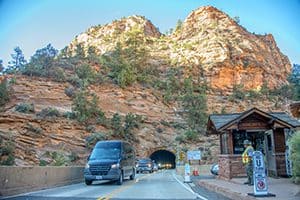
Zion is also a desert oasis, a sanctuary created by the wind and water. In fact, the name Zion is a Hebrew word meaning “Sanctuary.”
There’s a parking lot at the Visitor’s Center as well as at multiple small lots at key hiking trail heads throughout the park. However, cars are not permitted in the Valley. Visitors must take a shuttle from the Visitor’s Center.
We found the parking lot at the Visitor’s Center full and had to leave our car in the adjacent town of Springdale. From there you take a free shuttle into the park. Springdale, by the way, is ranked as one of the most charming towns in America by House Beautiful.
Once inside the park, hop-on-off shuttles get you to where you want to go.
The park’s most popular area is incredible Zion Canyon, with an average depth of 2,000 feet. It provides excellent hiking opportunities along its floor in the 20-30-foot-wide area known as “The Narrows.” In the Narrows, you can walk along the Virgin River, or in it, a popular hike for park visitors.
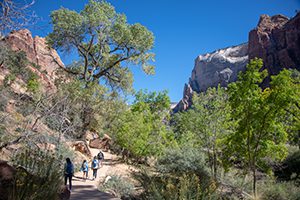
From the Grotto shuttle stop, you can hike to Angels Landing. The walk is moderate initially but later morphs into a path on which you must hold onto chains. At the top, however, you’re rewarded with a breathtaking view of Zion Canyon.
The walk to Weeping Rock and Lower Emerald Pool trails is more moderate and suitable for families. The rock is an overhanging formation through which water constantly drips or “weeps.” There are rare ferns and other vegetation here, existing only in the micro-climate of the rock.
Zion
Big 5 Zion is a 2½-hour drive from Las Vegas, Nevada, and 4½ hours from Salt Lake City, Utah.
– Fees: Private Vehicle – $35 / Motorcycle – $30 / bicyclists, hikers, and pedestrians – $20
– https://www.nps.gov/zion/index.htm
– Tel: (435) 772-3256
Note: Parking can be problematic in Springdale if you don’t arrive early on popular days.When planning a visit to Zion remember that park temperatures reach over 100 degrees during the summer months.
Also, if you plan on walking in the river in The Narrows, special equipment, including special shoes, is needed, and can be rented locally. Don’t attempt this hike in your running shoes or flip-flops. Check online regarding rental options in Springdale and other areas.
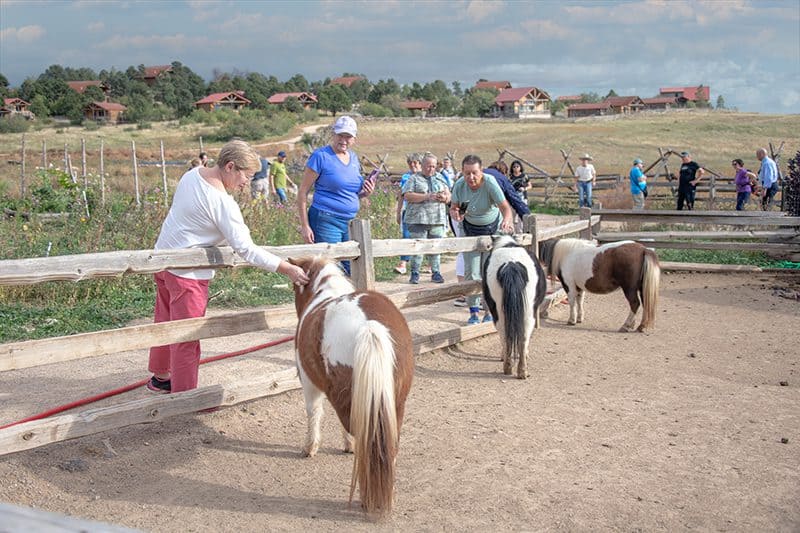
Zion Mountain Ranch
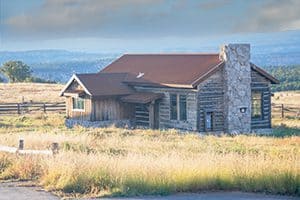
While visiting Zion, we stayed at the Zion Mountain Ranch, near the east entrance to the park. It’s a unique property with comfortable cabins spread about the property, so it doesn’t feel like a hotel. It’s upscale cabins vary in size, with some perfect for couples, others for families. One can accommodate 15 people, another has a private sauna.
The rooms are clean and comfortable and you have total privacy. Meals in its small restaurant are also very good. Providing a unique western flavor, is its herd of free-roaming buffalo. Kids will love the horses, chickens and other ranch animals.
It’s upscale, with rates are about the same as a good quality hotel.
Zion Mountain Ranch
Zion Mountain Ranch is located just a few minutes from Zion National Park’s east entrance.
9065 West Highway 9, Mount Carmel, Utah
https://www.zmr.com/
Tel: (866) 648-2555 / (435) 648-2555
Note: Be sure to time your arrival during the daylight hours, since the ranch is hell trying to find in the dark if you’re not familiar with the area.
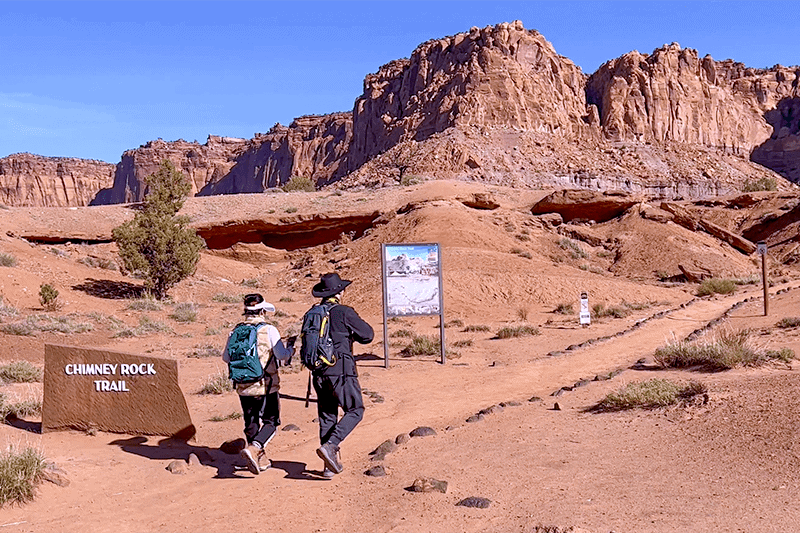
Capitol Reef National Park
While not as famous a National Park as Utah’s Zion or Bryce, the less-visited Capitol Reef, is another world. Here one finds sweeping vistas of a seemingly endless landscape of desert rock and sky, almost like another planet. It’s a five-hour drive directly south of Salt Lake City, about 6 hours from Las Vegas.
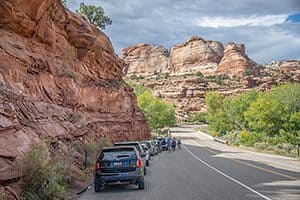
Utah Big 5 Capitol Reef has winding canyons and rocky domes and bluffs. All of them were created by a geological event 50 and 70 million years ago. It made a giant, 100-mile-long wrinkle in the earth’s crust. Called “The Waterpocket Fold” by geologists, 60 miles of it lies within Capitol Reef.
It is unique because the western side of the fold is 7,000 feet higher than the eastern side. That provides numerous dazzling viewpoints of the desert.
There are also uplifted rainbow-colored sandstone canyons and reefs, the reason it is known as the “Land of the Sleeping Rainbow.” While here, don’t miss Chimney Rock, Hickman Bridge Arch, and the Capitol Reef, the latter known for its white sandstone domes.
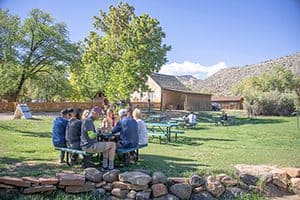
But this Big 5 park isn’t all just about Utah’s geology. In Capitol Reef National Park, you’ll also find unearthed Fremont Indian villages, the homes of a tribe that both hunted and cultivated, and irrigated crops. The tribes are named for the nearby Fremont River.
You may come across the interesting Gifford House, part of the old Gifford farm, settled in 1880. It’s a good place to stop midway across the park.
Capitol Reef is also an International Dark Sky Park and home to some of the darkest night skies in the world. Its clear, cool desert nights provide visitors with stunning views of the Milky Way Galaxy.
Capitol Reef
Capitol Reef is about a 3½ hour drive from Salt Lake City, 5 hours from Las Vegas.
– Fees: Private Vehicle – $20 / Motorcycle / bicyclists, hikers, and pedestrians – $10
– https://www.nps.gov/care/index.htm
– Tel: (435) 425-3791
Canyonlands National Park
Canyonlands National Park, the largest Big 5 National Park in Utah, attracts many adventure travelers, especially those who enjoy whitewater rafting. It also offers hiking, camping, mountain bicycling, rappelling, and horseback riding, among other things.
In addition, it’s a great place to enlist guides to hike in the back country. One popular thing to do in the park is to visit Mesa Arch to see its spectacular sunrise. It’s one of the most photographed geological spots in the American West. The arch is a relatively easy ten-minute or so trail walk off the highway. Go long before sunrise if you want to beat the crowd.
Carved by the Colorado and Green Rivers into countless canyons, mesas, arches, and buttes, Canyonlands is on the eastern side of Utah. It encompasses three distinct ” districts “: Island in the Sky, Needles, and Maze.
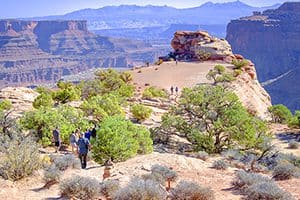
The most accessible district is Island in the Sky, a huge, flat-topped mesa with incredible panoramic overlooks. A scenic byway cuts across the district and provides access to beautiful vistas and hiking trails. Driving the picturesque byway is an excellent opportunity to see a large swath of the park in a limited time.
The Needles, so named for its rock pinnacles, is a backcountry experience where you’ll find rugged hiking trails, find canyons, and colorful stone spires.
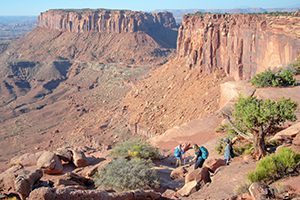
The Maze is the most remote and rewarding to trekkers, with a wonderful outdoor experience, including kayaking on the Colorado River. In the Maze’s Horseshoe Canyon, you can also view Prehistoric Native American artworks.
In the west of the park, this district is the most challenging, and all its roads require high-clearance 4WD. To reach its ranger station, you must drive down 46 miles of dirt road from the nearest highway.
Canyonlands
Canyonlands National Park is a 5-hour drive from Salt Lake City, 7½ hours from Las Vegas. It’s generally open 24 hours a day, year-round.
– Fees: Private Vehicle – $30 / Motorcycle – $25 / bicyclists, hikers, and pedestrians – $15
– https://www.nps.gov/cany/index.htm
– Tel: (435) 719-2313
Note: On a map, distances in the Canyonlands are pretty deceiving. That’s because no roads cross the rivers to directly link any of Canyonlands’ districts. As a result, traveling between districts requires 2-6 hours by car. Because of this, most travelers find it impossible to visit more than one or two districts in a single trip.

i like it
Thank you Emma.
Jim